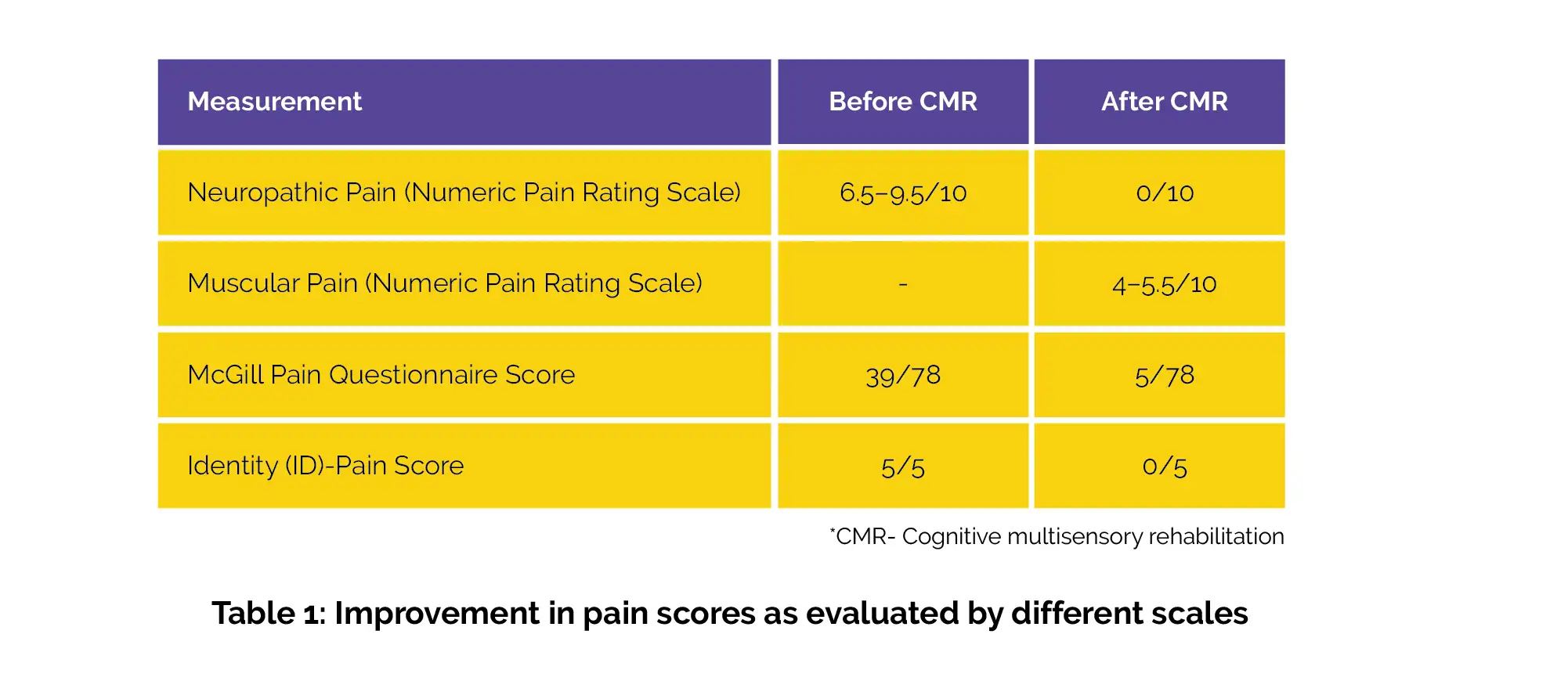Categories
Change Password!
Reset Password!


This case study assesses the effectiveness of Cognitive Multisensory Rehabilitation (CMR) in relieving severe phantom limb pain (PLP) in a patient unresponsive to medications, epidural stimulation, and mirror therapy, which hindered her prosthetic use and mobility.
Cognitive multisensory rehabilitation is a novel method of treating phantom pain which facilitates the recovery of visual and multisensory motor imagery in both the healthy and amputated limb providing pain relief and improved mobility.
This case study assesses the effectiveness of Cognitive Multisensory Rehabilitation (CMR) in relieving severe phantom limb pain (PLP) in a patient unresponsive to medications, epidural stimulation, and mirror therapy, which hindered her prosthetic use and mobility.
A female aged 26 years old faced severe PLP following the amputation of the third proximal part of her leg. This surgery was pursued after multiple unsuccessful treatments aimed at managing neuropathic pain in her left foot, which had persisted for 6 years.
Despite attempts with pain medication and mirror therapy, the phantom pain remained unyielding, making it difficult for her to wear a prosthesis. The patient underwent 35 sessions of Cognitive Multisensory Rehabilitation (CMR) between October and December 2012 involving multisensory discrimination exercises on the unaffected side and multisensory motor imagery exercises involving both limbs to restore mental body representations (MBR) and ease PLP.
The improvement in the pain scores after the use of CMR has been described in the following table 1:

Her reliance on pain medication decreased by at least 50% post-discharge, and by the 10-month follow-up in September 2013, she had ceased taking Methadone or Fentanyl. As an outpatient, she continued to receive CMR, mastering the use of a prosthesis and slowly abandoning the need for crutches by September 2013. She no longer depends on analgesics and can walk independently with the prosthesis, without the aid of assistive devices as of March 2024. Her PLP is effectively managed, and she manages any flare-ups using CMR exercises, which usually alleviate pain within 10 to 15 minutes.
This physical therapy results in a long-term reduction of PLP over 12 years. The restoration of MBR could be associated with the re-establishment of precise multisensory motor imagery involving both the remaining and amputated limb, encircling current and former actions.
Frontiers in Pain Research
Case Report: Phantom limb pain relief after cognitive multisensory rehabilitation
Marina Zerntiz et al.
Comments (0)